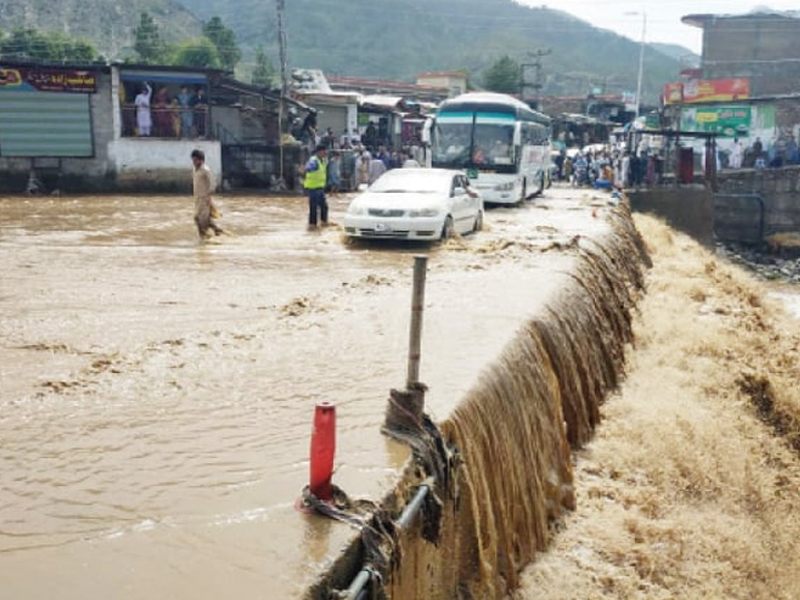Thousands of schools swept by flash floods

- 336
- 0
As if corona pandemic was not enough to play havoc with the future of students, the natural calamities in the form of unprecedented rains and flash floods have damaged thousands of schools across the country, resulting in cancellation and suspension of education of millions of children in the flood affected areas.
Monsoon rains and floods have damaged an estimated 18 thousand public schools in the country, causing an estimated loss of Rs60 billion, as per initial provisional estimates. Another country-wide provisional data collected from provincial Education Departments of all the our provinces indicate that around eighteen thousands schools have been damaged or destroyed due to the flash floods and torrential rains. Sindh is the most affected with as many as 15,842 schools, followed by 544 in Balochistan, In Southern Punjab, an estimated 1,180 in Punjab have been destroyed by rains and floods.
On the other hand, around 5,500 schools are vacated for flood affectees and are being used to accommodate these people displaced by floods. A rapid needs assessment (RNA) carried out in 12 districts and Tehsils of Balochistan province has discovered that around one thoussand classrooms were totally damaged (310 in Khuzdar, 198 in Lasbela and 168 in Jhal Magsi), while another 975 classrooms registred partial damages (304 in Khuzdar, 156 in Lasbela and 174 in Jhal Magsi), and around six hundred schools were being used to accomoate the displaced persons in Killa Saifullah, Jhal Magsi and Lasbela districts.
As for the KP province, the damage caused to schools is unprecedented in nature. In Swabi alone, over three hundred schools have been completely washed by rains and floods, Similar is th case in Swat, Bannu, D I Khan, Lakki Marwat etc where ab estimated eight thousands schools are fully or partially damaged by floods. Educationists say that this situation will result in unprecedented educational losses in a country where the number of drop-out of school children is already very high. This situation will result in further increase in the number of out-of-school children. As per available date, there are at least 18.7m children who never went to school and do not intend to go either. Pakistan stands second in the list of countries that have the highest number of out-of-school children. As estimated, 22.8 million children between the age of 5 to 16 years do not go to schools.
According to the latest statistics of the United Nations International Children's Emergency Fund, these out of school children form 44 per cent of the population in this age group, which is an alarming situation. Now this is appallingly big out-of-school children number which negates the claims by the successive governments to have launched plans aimed at enrolling more and more children in the schools.
To be very specific, not only educating such a big population of the out-of-school children is a challenge for the government, both federal and provincial, but ensuring international standards within the existing education system is seemingly a very difficult task. Moreover, the creations of jobs creations in the education sector also does not seem an easy task as till now it has not made a real progress. The irony is that education has never been among the top priorities of successive military and civil governments in the country. Almost every government since the inception of the country, has come up with plans to educate the masses, but those plans were never implemented in letter and spirit, A recent report says that one in every four Pakistani children had never enrolled in a school.
The figures indicate that there is a very slow pace of progress on education participation as well as closing of the gender gap which is increasing with the passage of time. The situation is almost same in every province. For example, Balochistan province has the lowest participation rate and highest number of out-of-school children. These statistics reflect the alarming situation of both foundational skills and their significance for productivity and growth. Our economic condition is dire and only a well-educated workforce can ensure an economic growth.
Inaction in bringing children and youth to schools will adversely affect Pakistan's potential for higher productivity and economic progress, and will continue to maintain a large informal labour market and substantial amount of poverty. As a matter of fact, the destruction of schools in floods may exacerbate the challenges of an already perilous education system by increasing dropouts, and reducing the chances of learning among the students and will affect their productivity on the long term.
The formidable challenges of out-of-school children call for a coordinated approach both at the federal and provincial as well as district level. It also calls for coordination at the programmatic approach and learning from one another's experience. Getting millions of children to schools is a gigantic task that will require consistent efforts for years by all levels of government from federal to provincial to district government. Inaction can lead to millions of more children dropping-out of schools in the country. The aim and objective should be to garner the support of key influencers from all walks of life to ensure that education and the future of our children does not take a backseat after the floods. The international donor agencies must come to help build the damaged schools on priority basis so that the future of millions of children can be saved.
Published in The Daily National Courier, September, 02 2022
Like Business on Facebook, follow @DailyNCourier on Twitter to stay informed and join in the conversation.

















































